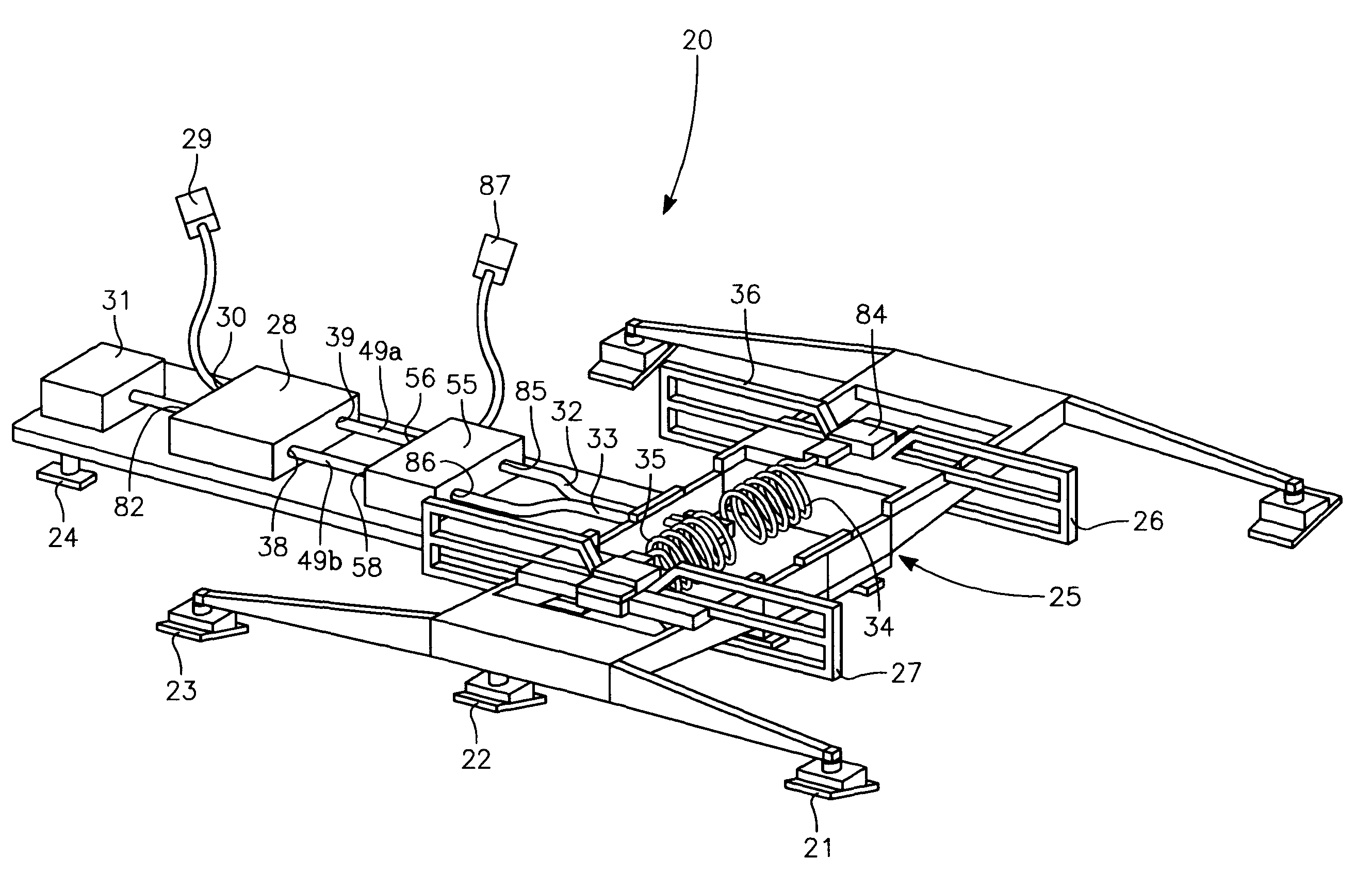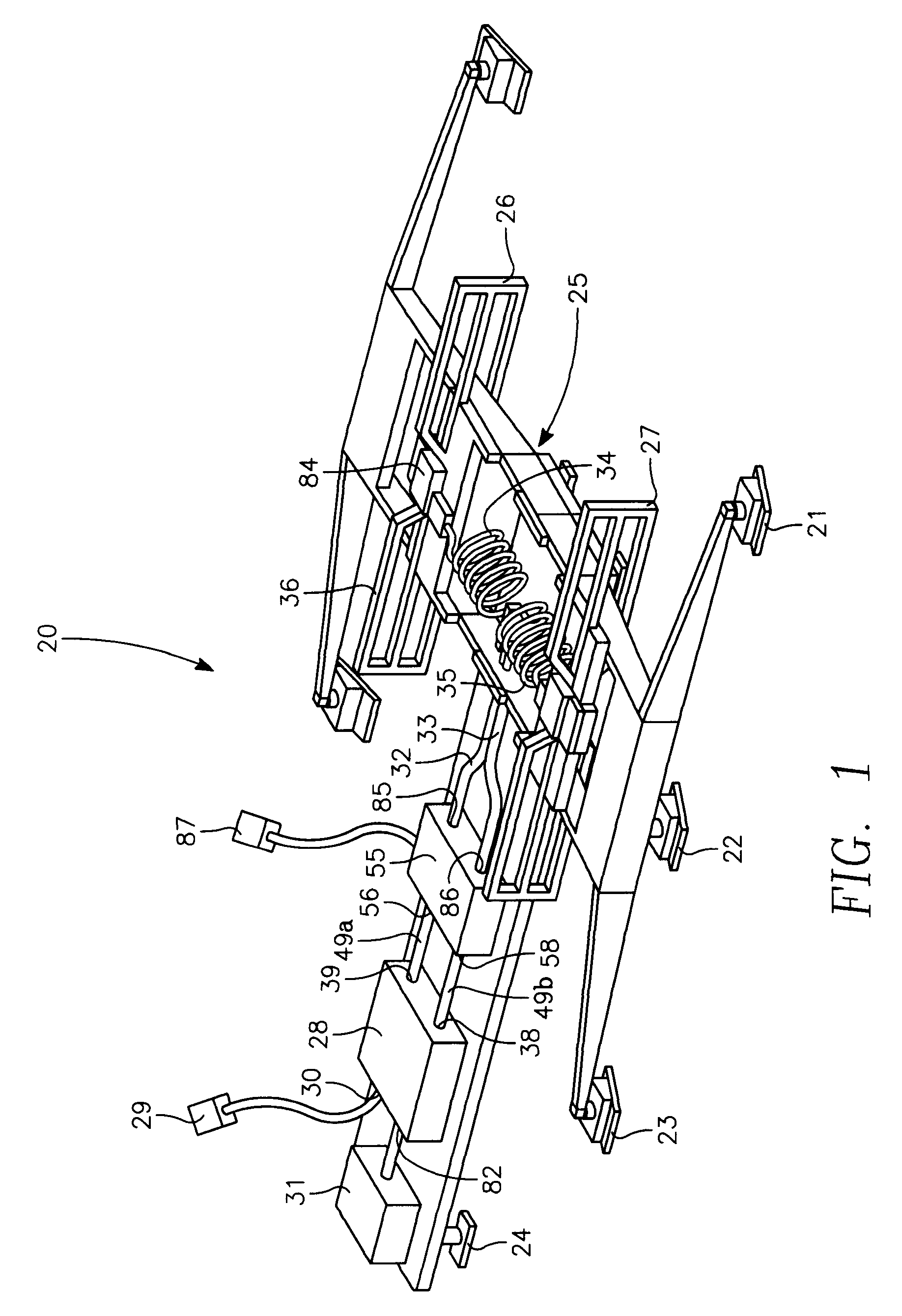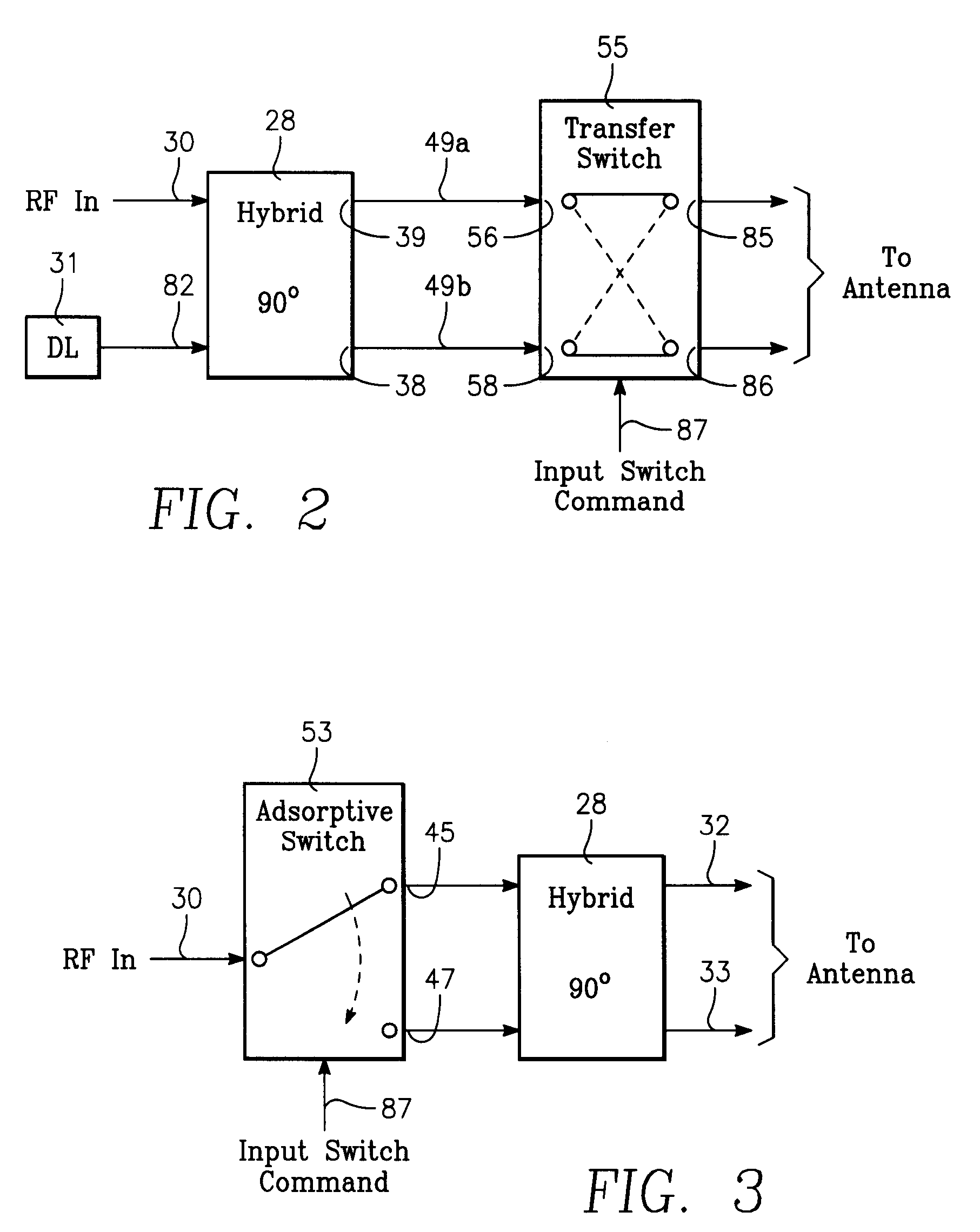Electronically steered phased array blade antenna assembly
a phased array blade and antenna assembly technology, applied in the direction of antennas, elongated active element feeds, antenna feed intermediates, etc., can solve the problems of reducing the effective radiated power performance, reducing the gain, and thus reducing the standoff distance between the jammer and the target, so as to improve the lateral target coverage, improve the effect of effective radiated power and improve the matching
- Summary
- Abstract
- Description
- Claims
- Application Information
AI Technical Summary
Benefits of technology
Problems solved by technology
Method used
Image
Examples
Embodiment Construction
[0018]The preferred embodiment of the electronically steered phased array blade (ESPAB) antenna assembly 20 is shown in FIG. 1. The ESPAB antenna assembly 20 fits within the constraints of a radome intended for use on an aircraft. Clamps 21, 22, 23 and 24 are mounted on a structure made of a dielectric substrate 25 and placed as shown to anchor the ESPAB antenna assembly 20 to the radome. The quantity of clamps mounted on the dielectric substrate 25 can be increased in order to achieve the desired stability.
[0019]The ESPAB antenna assembly 20 of FIG. 1 contains two modified dipole antenna elements 26 and 27 spatially separated by a distance approximated by λ / 4. This design requires that the dipole element separation be set to accommodate the center frequency of interest. Due to the radome's internal spatial constraints, the dipole element spacing deviation from λ / 4, within + / −20%, will also provide acceptable performance of the antenna assembly 20.
[0020]The RF signal that feeds the ...
PUM
 Login to View More
Login to View More Abstract
Description
Claims
Application Information
 Login to View More
Login to View More - R&D
- Intellectual Property
- Life Sciences
- Materials
- Tech Scout
- Unparalleled Data Quality
- Higher Quality Content
- 60% Fewer Hallucinations
Browse by: Latest US Patents, China's latest patents, Technical Efficacy Thesaurus, Application Domain, Technology Topic, Popular Technical Reports.
© 2025 PatSnap. All rights reserved.Legal|Privacy policy|Modern Slavery Act Transparency Statement|Sitemap|About US| Contact US: help@patsnap.com



